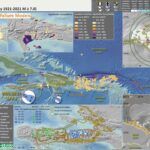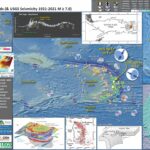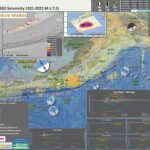I don’t always have the time to write a proper Earthquake Report. However, I prepare interpretive posters for these events. Because of this, I present Earthquake Report Lite. (but it is more than just water, like the adult beverage that…
Earthquake Report Lite: South Sandwich Islands
I don’t always have the time to write a proper Earthquake Report. However, I prepare interpretive posters for these events. https://earthquake.usgs.gov/earthquakes/eventpage/us6000f53e/executive Because of this, I present Earthquake Report Lite. (but it is more than just water, like the adult beverage…
EarthquakeReport M 7.1 Philippines
I don’t always have the time to write a proper Earthquake Report. However, I prepare interpretive posters for these events. Because of this, I present Earthquake Report Lite. (but it is more than just water, like the adult beverage that…
Earthquake Report: M 8.2 near Perryville, Alaska
A few days ago, I was passed out on my couch (sleep apnea) and for some reason I awoke and noticed that I had gotten a CSEM notification of a large earthquake offshore of Alaska. Well, after looking into that,…




